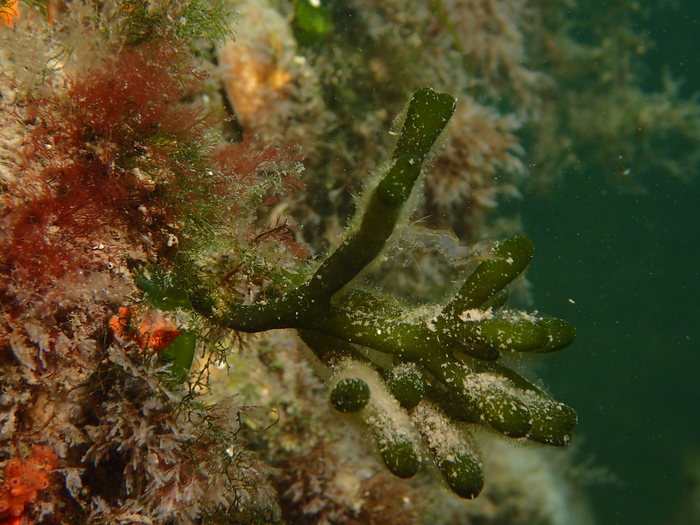
Codium fragile subsp. fragile (Suringar) Hariot, 1889
The species originates from the Pacific Ocean (Japan) and has been spread to both hemispheres, mainly due to shipping (Carlton and Scanlon 1985). In Europe, it was first found on the Dutch coasts of the North Sea in 1900 (Silva 1955), and since then, it was introduced in the western Mediterranean through Gibraltar in 1940 (Meslin 1964). Today, it has been spread also in the eastern basin of the Mediterranean Sea, including the Turkish coasts (Gurner et al., 1985)
Tsiamis, K., Panayotidis, P. (2007). Occurrence of Codium fragile subsp. tomentosoides (van Goor) P.C. Silva (Chlorophyta: Bryopsidophyceae: Bryopsidales: Codiaceae) in Greece. Aquatic Invasions 2(1): 74-76
1992
TS-Angl/fish
Sponge seaweed
The species is a model study system for many fields from algal physiology, endosymbiosis, and heavy metal accumulation to invasion ecology, algal genetics, and natural products. The alga also has economic value: it is cultivated for human consumption in Asia, used as invertebrate food by the mariculture industry, is a pest of natural and cultivated shellfish beds, is a source of bioactive compounds (antibiotic, anticarcinogenic, immuno-suppressive, anti-insect, and antihelminthic activity), and accumulates heavy metals, thus providing a model indicator of pollution.
Records of Codium fragile subsp. fragile
Sites where Codium fragile subsp. fragile has been recorded in the Hellenic Seas.
